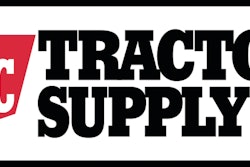
Let’s face it—to be “green” is no longer just an option today. Industry giants continue to make sustainability the mandate today that quality was a generation ago. But not enough businesses test and demonstrate processes to see the output of true sustainability before giving up on the whole “green” idea—increasing its cost consumption instead of lessening it to save capital in other growth opportunities.
As is the case with the general population, confusion and lack of education and training in sustainability leaves many purchasing professionals unable to distinguish between fact and myth. In fact, many practitioners in supply chain disciplines are somewhat suspicious and may not fully appreciate purchasing’s pivotal role in sustainability.
But purchasing not only has a principal role to play but a duty to lead in the green revolution.
Green purchasing and sustainability:
Two sides of the same coin
At its core, sustainability is conservation and preservation. A synonym for these words is savings, the province of the purchasing profession.
On the one side, sustainability bears the imprint of reduce, conserve and preserve. On the flip side is the purchasing reward of reduced costs and increased profits. The very acts of cutting costs and saving money are intrinsic to and integrally inseparable from sustainability. The cost savings and gains in sustainability are limited only by our creativity and willingness.
The green revolution is best led by well-educated and trained purchasing professionals who are grounded in good business and economic practices. A sustainability plan cannot be properly created or implemented without the active participation and leadership of purchasing professionals in these principal areas of sustainability:
- Energy and fuels
- Reduce, Reuse, Recycle (3Rs)
- Construction and facilities
- Chemical/environmental
- Corporate Social Responsibility (CSR)
- The green purchasing and sustainability plan
Of the principal areas of sustainability, purchasing arguably has the least direct impact on the most publicly visible area of sustainability: CSR. Ironically, it is the savings harvested by purchasing that fund the advertising and public relations campaigns touting an organization’s sustainability gains. This is particularly true in the Business to Consumer (B2C) industry sectors such as retail.
But retailers cannot achieve their goals on their own without incorporating the active participation of suppliers. In many cases, suppliers are graded with green, yellow and red for GHG reduction goals and can be terminated for failure. Take Walmart, for example. Although the retail giant had long managed its own inbound and outbound freight, it began to manage the inbound freight of its principal suppliers.
In its public pronouncements, Walmart trumpeted is reductions in thousands of tons of GHG reduced worldwide by this action and proclaimed the customer advantage as the reduction in costs that were directly transferred to the customer in the form of lower prices.
Sustainability facts and myths
Distinguishing between fact and myth is critical to creating any bona fide sustainability plan. To address this, we must be schooled in the sciences and technologies ingrained in the decision-making process.
Electricity is the most inefficient of the common nine sources. About 14 times more efficient is coal. Oil, wood, natural gas, gasoline and propane all are more efficient than electricity. Since we are speaking about automobiles, even confining the comparison to traditional motor fuels, electricity is twice as inefficient as any of those.
But the science makes for a much worse case for the electric car. Electricity measured at the point of manufacture is lost in various forms before it reaches its point of usage. Heat loss (and voltage drop) in transmissions lines and waste heat in transformers are powerful depletion factors in electricity.
Additionally, the all-electric car has limited highway mileage ranges and speeds. Recharging stations all use the least efficient fuel source and the vehicle itself weighs more, because of its heavy electric motor and batteries. What’s worse, these batteries are expensive to replace and often made in countries with deplorable environmental records.
Thus, the sustainability of the electric car is far more of a myth than a fact. Scientific analysis aside, the reality is that the all-electric vehicle, despite more than a century of development, has not progressed beyond the super market scooter or golf cart.
For the supply chain pro, sustainability is an opportunity to lead, reduce costs and preserve the resources for the quality of life needed for future generations. The best news in the case of sustainability is that the right thing to do also saves money.













